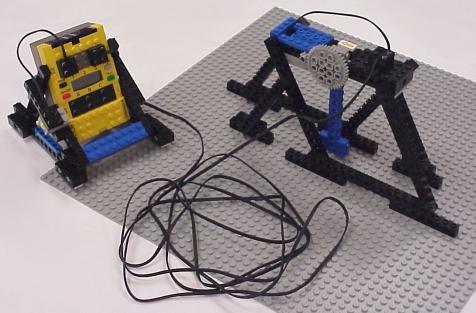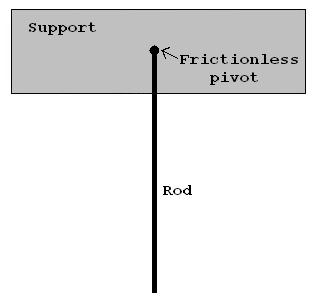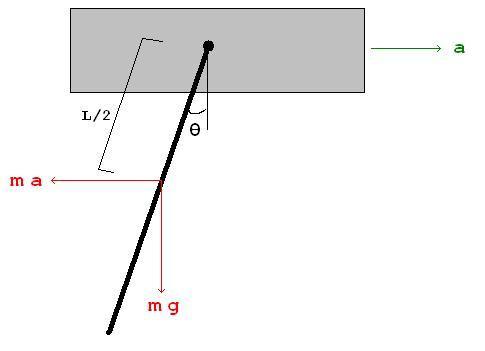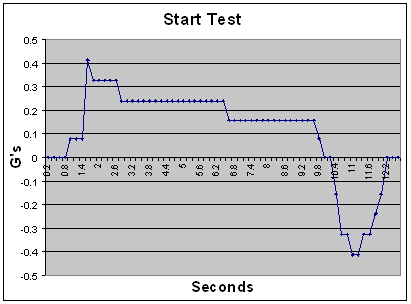

Accelerometer
Believe it or not, creating a simple accelerometer is quite easy. All you need is a hanging rod, and a little knowledge of kinematics. The equation to use is pretty simple too. Here is a step by step derivation geared towards non engineers.

This is the setup. You have a support that has a rod hanging from it by a pin. We will assume it is frictionless joint to make the derivation simpler. The rod has length "L" and mass "m". I will use "a" as the support's acceleration and "g" as gravity.

If you accelerate the support, the rod will feel an inertial force and get sort of left behind creating an angle theta (θ) from vertical. There are four forces acting on this rod, neglecting friction and air resistance. Two reaction forces at the pin, its weight (mg) pulling it down, and an inertial force (ma) pulling it back.
We are going to assume that the acceleration is constant. That means that the rod will be at a constant angle and not rotating. In order for the rod to not be moving, the sum of all of the forces acting on it must be equal to zero. The reaction forces at the joint are of no interest to us, we need to concentrate on the moment (spin) about the joint.
Two things contribute to creating a moment about a certain point. One is the force, and the other is how far away that force is from the point. Specifically, the perpendicular distance. A moment due to a force is equal to the force times this distance.

Using basic trigonometry rules, the long right side of this triangle equals L/2 * cos(θ), and the shorter side on the bottom equals L/2 * sin(θ). Notice how the two forces are pulling the rod in different directions. The moments due to each of these forces have to be equal. That means that one force times its perpendicular distance from the pivot has to equal the other force times its perpendicular distance. That sounds like a lot but this is all it is:
m * a * L/2 * cos(θ) = m * g * L/2 * sin(θ)
Now all that's left is to cancel and simplify. As you can see, the mass and length of the rod drop out of the equation completely. This makes the equation very simple, only depending on the angle and gravity. Here is the final form of the equation:
a = g * tan(θ)
You have your choice of units now. Either choose 9.8 m/s^2 or 32.2 ft/s^2 for "g". An interesting side note, if you take out "g" from the equation you will get your answer in Gs. Example, you accelerate your car so that the rod is at a 45 degree angle. Tan(45) equals 1. Therefore, you are experiencing one G force in the horizontal direction from your car's acceleration at that instant. Not to mention you always experience 1 G vertically when you are on the surface of the Earth.
This is a typical plot of my car's acceleration from a dead stop using this sensor:
